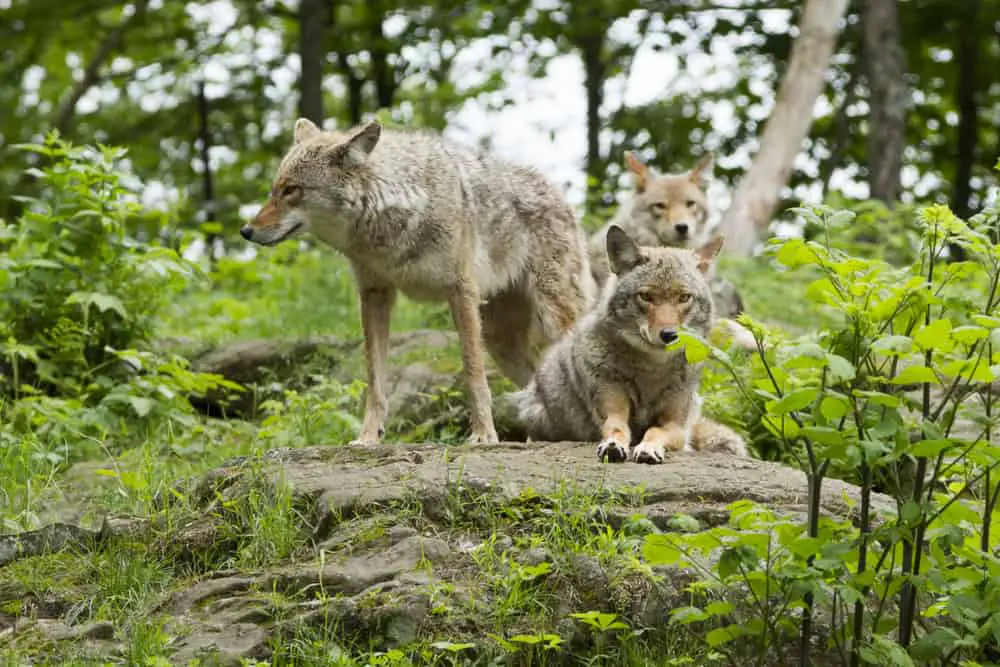
Coyotes live all across Northern America, up into Canada and down into Central America.
They are often seen wandering around singularly and in pairs. Hearing stories about coyotes and seeing them on TV has made me wonder about their pack-life. How big are coyote packs, and how do they function together?
Coyote packs are made up of an alpha male and female mated pair. The rest of the pack comprises close relatives, the alpha pair’s latest liter, numbering between 4 – 7 pups, and depending on the location, 3 – 4 other adults often encompassing individuals from previous litters.
Knowing that coyote packs are made up of family members is just the tip of the iceberg. There is so much more information on how these pack members function together as a unit. Let’s delve deeper into the ins and outs of coyote packs.
Table of Contents
- How are Coyote Packs Formed?
- How Big are Coyote Pack Territories?
- How Do Coyotes Pack Members Communicate with One Another?
- Do All Coyotes Live in a Pack?
- Conclusion
How are Coyote Packs Formed?
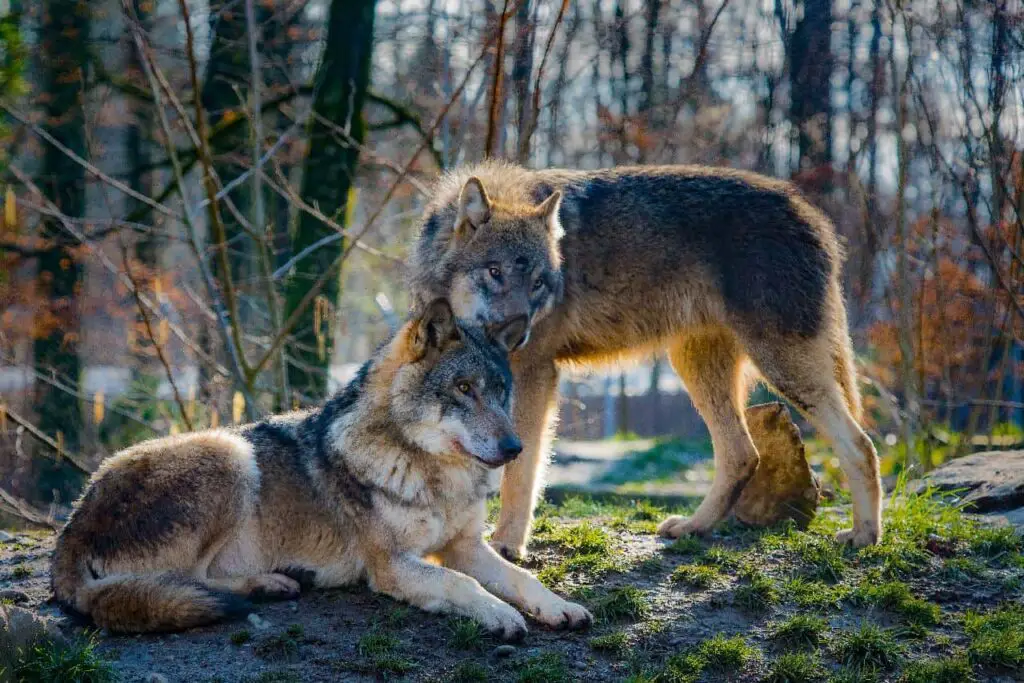
Male and female coyote mated pairs are often monogamous, remaining together for many years. Once mated, the couple forms the basis of their pack, from where they produce their offspring, who in essence become the newest members of their pack. Mating season for coyotes is between January and March, and gestation lasts between 58 – 65 days, after which a female will bear between 4 -7 pups per litter.
During this time, the female coyote will make use of a den or underground burrow. In case of a flood, these dens are often found on a hillside with good drainage and a good vantage point to see any approaching danger. Females will dig a new burrow, use a previously dug burrow or take over other animals’ burrows, such as a badger hole.
The newest pack members are born blind and therefore stay in the den for up to 2 – 3 weeks before they venture outside to play and begin their life lessons. By weeks 5 – 7, the pups are weaned and are now cared for and fed regurgitated food by both parents. When they are 6 – 9 months old, they can fend for themselves, and by 12 months, are considered fully grown.
Typically, during the fall months, the young will disperse. In some cases, a few pups will decide to stay on with their parents, forming packs for the winter. They will also help to care for their younger siblings when the time comes.
More often, the female pups will decide to remain with their parents, with the males leaving to find greener pastures.
The coyotes’ social systems are highly organized. Genetic studies have shown that most members in a pack are closely related, except for the alpha pair, who would have started the pack and therefore would not share the same genetics. So it is understandable to know that only the alpha male and female may mate within the pack.
How Big are Coyote Pack Territories?
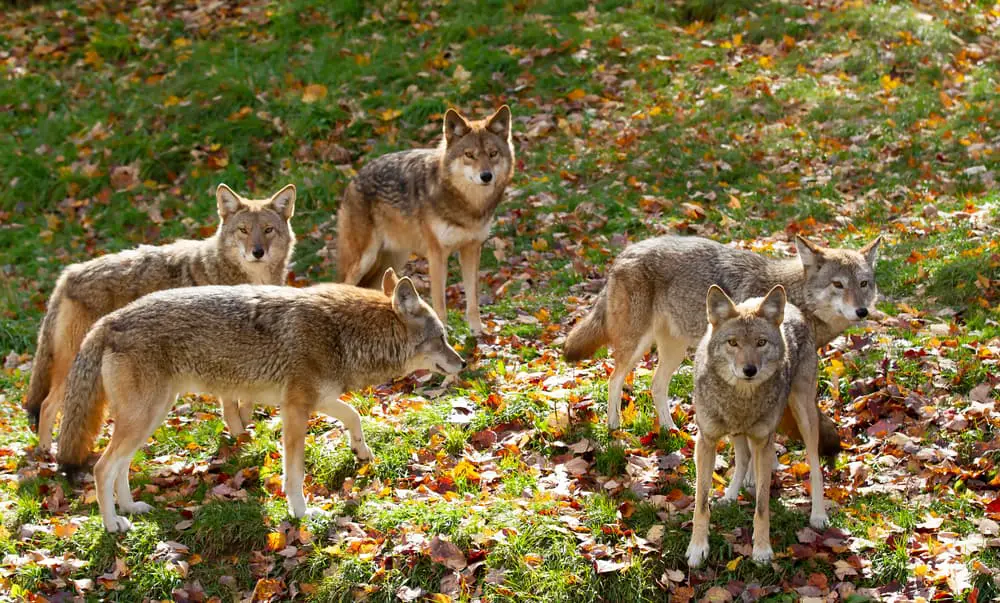
Group size is often dependent on location. With larger groups living in protected areas, these larger groups may include other members who have been accepted into the family unit. Smaller groups, made up of a mated pair and their latest offspring, are more often found in rural areas where trapping and hunting are standard.
Group size is also dependent on the availability of food. If food is abundant, you can expect to find a larger coyote pack, but you will often see only the nuclear family living together if food is scarce.
Coyotes are very territorial; territories are market by feces and urine. Both the male and female of a mated pair will defend their territory against outsiders, creating little territorial overlap between coyote packs. It is hypothesized that howling could be used as an indication that a territory is occupied.
Territory size will be dependent on the environment and the amount of food available in the area. But on average, territories range between 4 – 15 square miles.
How Do Coyotes Pack Members Communicate with One Another?
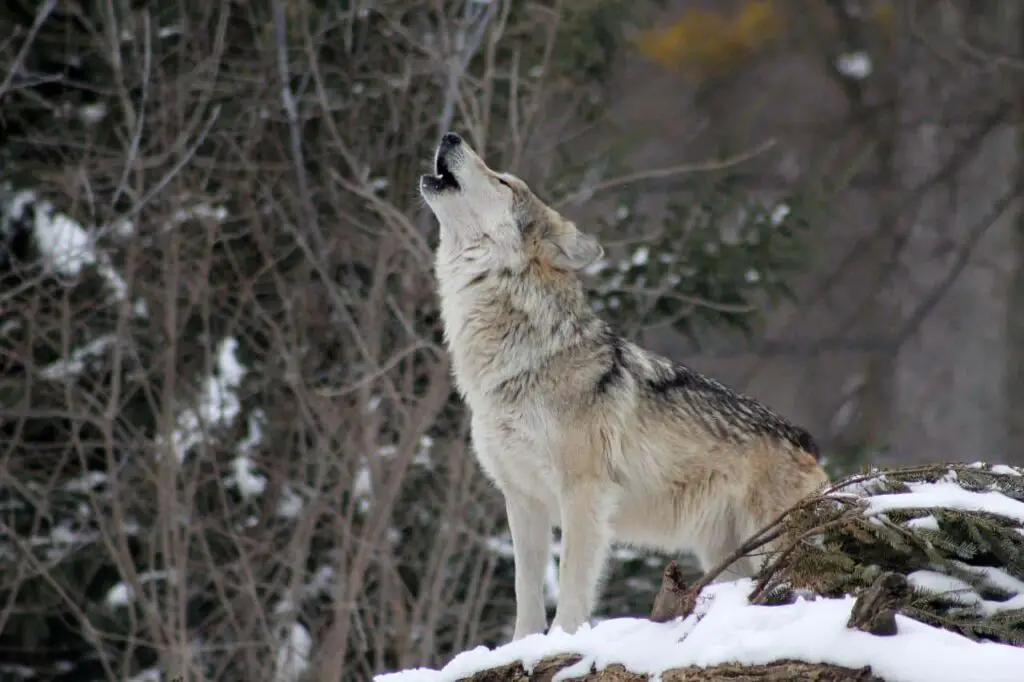
Coyotes are very vocal animals known for their nightly serenades and are hailed as the most vocal wild animals in North America. Therefore, it’s unsurprising to find that they often use verbal communication amongst themselves.
Coyotes use several vocalizations with different meanings. Coyotes use long howls to let others know where they are. Long howls are sometimes answered by a group howl, enabling the individual to hear where the group is. It is also hypothesized that howling could be used to announce the packs’ territory to other packs.
Packs also use the yip howl to greet each other as well as low-frequency whines.
When addressing the alpha coyote, the submissive pack members often use this low-frequency whine, with muzzle nibbling and tail wagging. High-frequency wines are used by dominant coyotes when acknowledging submission from a subordinate pack member. The group yip howl is used when two or more members of a pack reunite.
Barks and woofing are used as one method for coyote pack members to alert one another to threat or danger, especially around the den when there are small pups. When heard, the pups will also use this as a warning and head back into the burrow for safety. The bark is also used as a threat display when protecting a kill or a food source.
Growls can also be used when a threat or danger is close. Growls and yelping are often heard amongst pups while they are playing. Huffing, produced by rapid air expulsion creating a high-intensity noise, is used to call pups.
Do All Coyotes Live in a Pack?
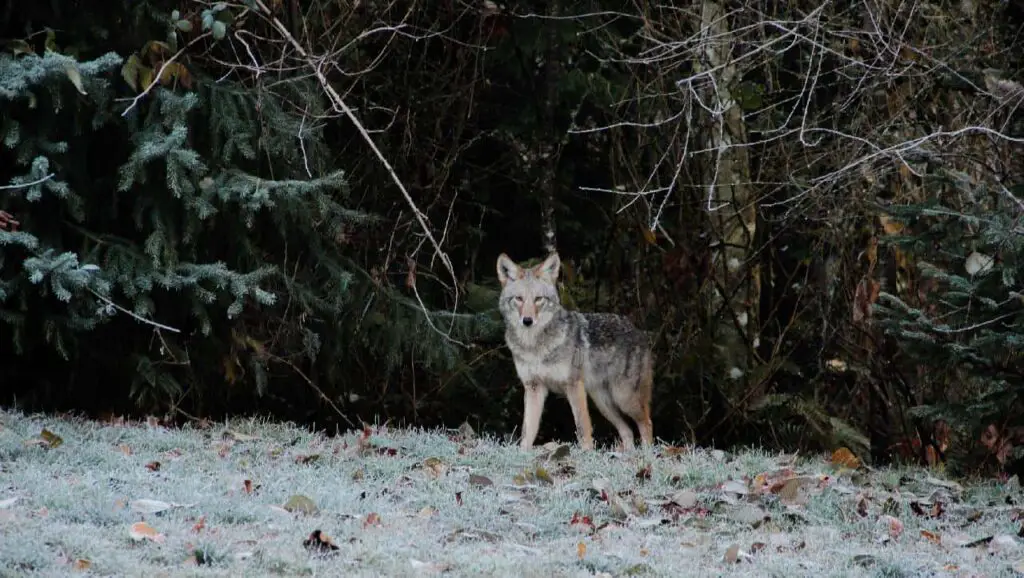
When you see a lone coyote walking in the distance or across a field, it is impossible to tell if it is part of a pack or a lone coyote. Even though coyotes are often part of a pack, they tend to hunt alone or in pairs, only hunting in more significant numbers if necessary to take down bigger prey.
Many coyotes roam alone and are not part of a pack. These lone coyotes are often made up of year-old males looking for a mate and their own territory. There are also many females looking to join a new pack.
The average age group of lone coyotes is six months to 2 years old. Sometimes you will find an older coyote that has left its pack and become a solitary coyote. These solitary coyotes travel far distances ranging up to 60 square miles. They often have to travel across other coyotes’ territories.
Conclusion
Smaller coyote packs comprise a mated alpha male and female and their most recent litter, which averages between 4 – 7 pups. The larger packs will generally have 3 – 4 other adult coyotes included in their group. Often these other adults are females from previous liters, but they can, on occasion, be another coyote who the alpha pair have accepted.
Their highly organized social system is aided by vocal communications between members of the pack. Not all coyotes are part of a pack, with many being solitary, looking for mates of their own, or new packs to join.
References:
National Geographic Kids: Coyote
Britannica: coyote
Urban Coyote Research Project: GENERAL INFORMATION ABOUT COYOTES
National Geographic Kids: Coyotes on the Move
Animal Diversity Web: Canis latrans
DesertUSA: Coyote
New Hampshire’s PBS Station: Coyote – Canis latrans
Urban Coyote Research Project: HOW MANY COYOTES ARE IN A PACK?
Quora: How many coyotes generally live together in a pack?
Quora: Are coyotes pack animals?
WBI Studies Repository: Social Ecology and Behavior of Coyotes
